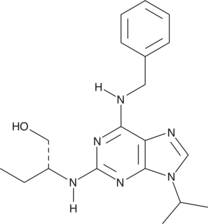Description
A carotenoid with diverse biological activities; reduces hyperglycemia-induced mitochondrial DNA damage and production of ROS and promotes mitochondrial biogenesis in ARPE-19 cells at 10 µM; increases NO production and decreases serum levels of endothelin-1 in a rat model of hyperhomocysteinemia at 20 mg/kg; dietary administration decreases monocyte migration and lesion size in an ApoE-/- and Ldlr-/- mouse models of atherosclerosis; reduces infarct size and cardiac MDA, LDH, and troponin T levels, and increases cardiac CAT, SOD, HO-1, and Nrf2 in a rat model of isoproterenol-induced heart failure; high dietary intake is positively correlated with reduced risk of age-related macular degeneration and cataracts in humans
Formal name: (6’R)-β,ε-carotene-3R,3’R-diol
Synonyms: E 161b|Xanthophyll
Molecular weight: 568.9
CAS: 127-40-2
Purity: ≥95%
Formulation: A crystalline solid
Product Type|Biochemicals|Natural Products|Carotenoids||Product Type|Biochemicals|Ox Stress Reagents|Antioxidants||Research Area|Cardiovascular System|Cardiovascular Diseases|Atherosclerosis||Research Area|Cardiovascular System|Cardiovascular Diseases|Heart Failure||Research Area|Cell Biology|Cell Signaling|Nitric Oxide Signaling||Research Area|Cell Biology|Mitochondrial Biology||Research Area|Immunology & Inflammation|Innate Immunity||Research Area|Neuroscience|Ophthalmology||Research Area|Oxidative Stress & Reactive Species|Antioxidant Activity||Research Area|Oxidative Stress & Reactive Species|Lipid Peroxidation||Research Area|Oxidative Stress & Reactive Species|Reactive Oxygen|Catalase||Research Area|Oxidative Stress & Reactive Species|Reactive Oxygen|Superoxide Dismutase




